Planning of Gastronomic Tourism Destinations in Balikpapan City
on
E-Journal of Tourism Vol.9. No.2. (2022): 210-217
Planning of Gastronomic Tourism Destinations in Balikpapan City
Gozali Gozali*
School of Postgraduate of Tourism Studies, Gadjah Mada University, Indonesia Department of Hospitality Management, Balikpapan State Polytechnic, Indonesia
*Corresponding Author: gozali@poltekba.ac.id
DOI: https://doi.org/10.24922/eot.v9i2.88944
Article Info
Submitted:
July 14th 2022
Accepted:
September 20th 2022
Published:
September 30th 2022
Abstract
Planning the development of food-related tourist destinations often ignores the expectations of tourists themselves. This phenomenon almost occurs in various regions in Indonesia, especially in Balikpapan City. The purpose of this study is to analyze the planning of gastronomic tourism destinations from the tourists' perspective. This research was conducted using a descriptive survey method to determine the expectations of tourists visiting Manggar Beach in Balikpapan City regarding the gastronomic aspect. Data collection was carried out in April–June 2022 using an online questionnaire (google form), which was distributed to 117 respondents. The results of data collection were analyzed using SPSS 21.0 descriptively (frequency, arithmetic mean, and standard deviation). The scale of validity and reliability was measured. Research findings show that the gastronomy offered by culinary centers is less varied, most 76.9% of visitors have the habit of bringing raw food ingredients and cooking independently, 15.4% brought food and beverages from home, and 7.7% bought those available at culinary centers. Most of the visitors rated the satisfaction variable indicator in the unfavorable category, the lowest average value was Y2 (x̅ = 1.82, SD= 0.38) and the highest mean Y8 (x̅ = 2.50, SD = 0.76).
Keywords: gastronomy; gastro tourism; destination planning; tourist expectations.
INTRODUCTION
Background
The development of food tourism (food tourism, culinary tourism, gastro tourism) has recently experienced a positive increase in many regions in Indonesia. However, its existence often faces serious problems that cause deterioration and unsustainability. This phenomenon, encourage innovation in food literacy, culinary arts, cultural identity, local
entrepreneurship and balance sustainable development in tourism destinations (Ranteallo & Andilolo, 2017). For this reason, the culinary tourism industry manager must consider this change, adjust the products offered according to tourist requests and preferences (Türker & Süzer, 2022) and create memorable or creative experiences (Ali et al., 2016). Because, in culinary tourism, what is offered to tourists is the taste, texture, culture, heritage, local culinary culture, customs, and the
experience of enjoying authentic food and beverages (The World Food Travel Association, 2019).
Meanwhile, in reality, there are not a few and often found culinary centers in tourist destinations that operate as they are, are not in demand by visitors and tend to be abandoned by the market as happened in the Manggar beach tourist destination, Balikpapan City, East Kalimantan. Even though tourism that offers this beach atmosphere every weekend, the number of tourist visits reaches 3000-5000 people and a significant increase to 47.900 people during the Eid holiday and contributes to local income of 562.850.000 in 2022 (Putri, 2022).
However, this potential has not been fully supported by a comprehensive development plan. This can be seen from the policy products and development plans made by the local authorities, which are limited to managing the Manggar beach area, not yet regulating in detail the development of culinary tourism destinations in the Manggar beach area. Whereas the culinary business that is integrated with tourist destinations requires special arts and must involve professional actors in its management. According to Ellis et al., (2018) the development of food-centric destinations depends on the cooperation of various parties and government support, in order to realize an optimal tourism experience (Wi-jayanti & Damanik, 2019).
Researchers have previously discussed this type of tourism (Carpio et al., 2021; Pamukçu et al., 2021; Blomstervik et al., 2021; Kim et al., 2021; Pérez Galvez et al., 2017; Tsai & Wang, 2017). However, very few studies offer a holistic view of gastronomic tourism planning from a tourist perspective. Therefore, this paper focuses on the issue of planning the development of gastronomic tourism that is integrated with coastal tourist destinations based on tourist perceptions.
This study is important in
determining and understanding tourist preferences in planning the development of gastronomic tourism. Due to the development of food-related tourism in recent years, changing expectations of tourists seeking to experience the identity and authenticity of local food, and new culinary trends (Ellis et al., 2018; Türker & Süzer, 2022).
This paper aims to analyze the planning of gastronomic tourism destinations in the Balikpapan area which is useful for tourism professionals and the government in developing this type of tourism. Considering that Balikpapan City has authentic (culinary and cultural) potential to be developed and offered as a gastronomic tourism destination in the future. In addition, Balikpapan is currently trying to prepare itself as a buffer city for the government center for the new Indonesian capital (Pur-wanto, 2022).
This study will contribute to the relevant literature in determining and understanding tourist preferences for culinary tourism development planning, which is valuable for local governments and tourism professionals in the process of planning and developing gastronomic tourism in accordance with tourist preferences in Balikpapan City, East Kalimantan.
METHODS
This research was conducted using a descriptive survey method. In particular, it is focused on planning the development of gastronomic tourism on the Manggar beach in Balikpapan City. This study aims to assess the perception of tourists. Data was collected using a questionnaire distributed to 117 respondents in addition to observation, interviews, and documentation (Sugiyono, 2017). Respondents were determined using a nonprobability sampling technique, namely the accidental research sample of local
tourists who had visited Manggar beach in Balikpapan City. Due to the Covid-19 pandemic situation in Balikpapan City, the distribution of questionnaires was carried out online using a google form in April - June 2022. The survey instrument was measured using a four-point Likert scale (Sunarto & Riduwan, 2017): very poor (1), poor (2), good (3), and very good (4). The four-point Likert scale eliminates aspects of doubt to avoid uncertain answers, resulting in more precise data (Wijayanti & Damanik, 2019).
RESULTS AND DISCUSSION
Overview of Research Locations
Manggar beach is located in the Balikpapan City area, East Kalimantan, Indonesia, precisely in the Manggar and Teritip Villages, East Balikpapan District, which is connected to the Makassar Strait route as shown in Picture 1.
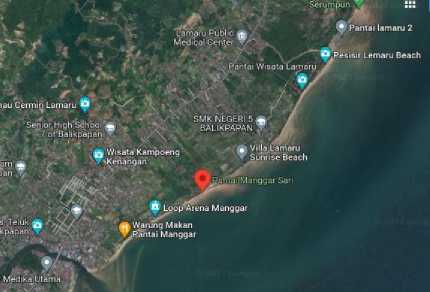
Picture 1. Location of Manggar Beach (Source: Google maps, 2022)
This beach tourism object has an area of 13,000 m2 and the presence of pine trees which are its trademark. This tourist destination is managed directly by the UPT Pantai Manggar Segara Sari which is an arm of the Balikpapan City government.
Most of the tourists who visit Mang-gar Beach come from various cities around Balikpapan City such as Penajam Paser Utara, Bontang, Tenggarong, and Samarinda. This tourist destination not only provides rides for sea water games, but also provides various supporting facilities, one
of which is a culinary center that offers local cuisine as shown in Picture 2.
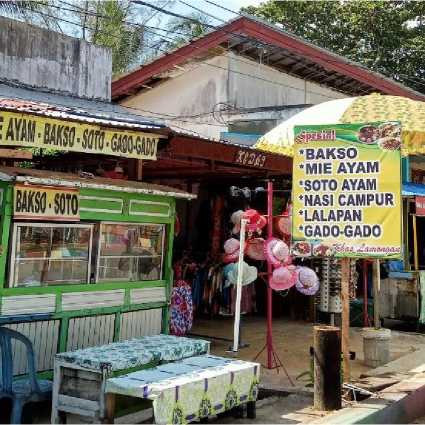
Picture 2. Manggar beach culinary center (Source: Field survey, 2022)
Manggar Beach Management also provides a sit cross area for visitors as shown in Picture 3.
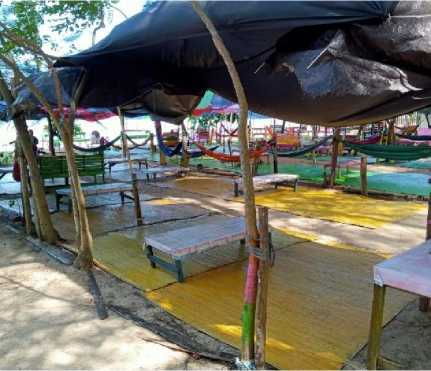
Picture 3. Sit cross area of the Manggar beach culinary center (Source: Field survey, 2022)
Visitors can use the area to enjoy food and beverages ordered and purchased at the culinary center.
Manggar beach is a favorite tourist destination for tourists to spend free time with family while enjoying the beach atmosphere as shown in Picture 4.
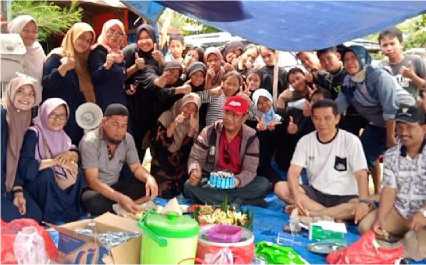
Picture 4. Portrait of Manggar beach tourists (Source: Field survey, 2022)
Tourists who visit generally have a habit of bringing food and beverages or food ingredients (such as chicken, beef, and seafood) which are ready to be processed using the equipment they carry independently as shown in Picture 3.
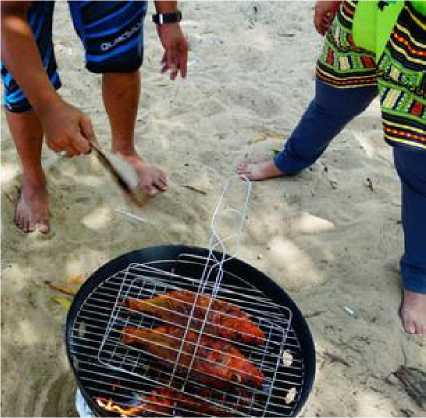
Picture 3. The habits of Manggar beach tourists (Source: Alfonso, 2017)
The food ingredients are processed directly with the barbecue technique and carried out on the beach.
Instrument test
Instrument testing was conducted on 25 respondents which included validity and reliability tests. The validity test was carried out by comparing the total item correlations that were correlated with the r-ta-ble value, which was obtained by 25 respondents, namely 0.396 as shown in Table 1.
|
Table 1. Correlated-item total correlation value. | ||
|
No |
Questioners Items |
r-Statistics |
|
1 |
X1 |
0.447 |
|
2 |
X2 |
0.418 |
|
3 |
X3 |
0.447 |
|
4 |
Y1 |
0.629 |
|
5 |
Y2 |
0.875 |
|
6 |
Y3 |
0.441 |
|
7 |
Y4 |
0.574 |
|
8 |
Y5 |
0.595 |
|
9 |
Y6 |
0.790 |
|
10 |
Y7 |
0.677 |
|
11 |
Y8 |
0.434 |
|
12 |
Y9 |
0.732 |
|
13 |
Y10 |
0.544 |
|
14 |
Y11 |
0.626 |
|
15 |
Y12 |
0.407 |
|
Source: |
Field Survey, 2022 | |
From Table 1, we can see that the statement items in the questionnaire are valid because the r-statistical value is greater than the r-table value (ie 0.396).
The reliability test was conducted to determine the consistency of the questionnaire in measuring the same symptoms (Umar, 2003) The test is carried out by comparing the Cronbach Alpha value with a critical value of 0.6. The results of the reliability test can be seen in Table 2.
|
Table 2. Cronbach's alpha values (α). | ||
|
Variable |
α |
critical value |
|
X |
0.872 |
0.6 |
|
Y |
0.816 |
0.6 |
Source: Field Survey, 2022
From Table 2 it can be seen that the value of Cronbach's alpha is greater than the critical value of 0.6 so that all variables in the instrument are reliable (Umar, 2003).
Characteristics of Respondents
The survey results showed that male and female visitors were evenly distributed at 51.3% and 48.7%, respectively. Mang-gar beach visitors are dominated by the age of 35 years (71.8%), the rest (28%) are 3640 years old.
Gastronomy at the Culinary Center of Manggar Beach
The survey results show that there are at least nine outlets operating at the Manggar Beach culinary center. Most of the food products offered are local foods as shown in Table 5.
|
Table 4. Characteristics of the respondents. | |||
|
No |
Description |
F |
% |
|
1 |
Gender | ||
|
Male |
57 |
48.7 | |
|
female |
60 |
51.3 | |
|
2 |
age | ||
|
15-25 |
41 |
35 | |
|
26-35 |
43 |
36.8 | |
|
36-62 |
33 |
28.2 | |
|
3 |
Education | ||
|
Senior High School |
13 |
11.1 | |
|
Diploma |
46 |
39.3 | |
|
Bachelor |
34 |
29.1 | |
|
Post Graduate |
24 |
20.5 | |
|
4 |
Marital status | ||
|
Married |
46 |
39.3 | |
|
Unmarried |
71 |
60.7 | |
|
5 |
Origin | ||
|
Balikpapan |
84 |
71.8 | |
|
Beyond Balikpapan |
30 |
25.6 | |
|
Beyond East Borneo |
3 |
2.6 | |
|
6 |
Frequency of visits | ||
|
1 time |
35 |
29.9 | |
|
2-3 times |
40 |
34.2 | |
|
4-5 times |
17 |
14.5 | |
|
>5 |
25 |
21.4 | |
Source: Field Survey, 2022
The level of education of visitors is evenly distributed: diploma (39.3%), and undergraduate (29.1%) and postgraduate (20.5%). Most of the visitors (71.8%) came from Balikpapan City, (25.6%) from outside Balikpapan City, although they still live on the island of East Kalimantan. Most visitors (34.2%) have visited more than twice.
|
Table 5. Gastronomy offered | ||
|
No |
Outlet |
Menu Items |
|
1 |
Mr. Doddi's restaurant |
Fruit salad Clear Vegetables Grilled chicken Iced tea Orange juice |
|
2 |
Nabila's shop |
Mixed vegetables with the peanut sauce Chicken Soto Fried chicken Milo Pop ice Iced tea |
|
3 |
Citra shop |
Mixed vegetables with the peanut sauce Rawon Fried chicken Coconut ice |
|
4 |
Warung Segara Sari |
Rujak/Gado-gado Meatball Grilled fish Fried fish Coconut ice Iced tea |
|
5 |
Disporpar Canteen |
Chicken noodle Pop Mie Sweet and Sour Shrimp Assorted fried snacks Coffee Assorted fruit juices |
|
6 |
Mr. Mur's Meatballs |
Chicken noodle Meatball Iced tea Orange juice |
|
7 |
Manggar Juice King |
Sweet and sour salad Assorted fruit juices |
|
8 |
Sate Madura Mr. Indra |
Chicken satay and rice cake Iced tea Orange juice |
|
9 |
Lesehan shop |
Mixed rice Assorted fried snacks Ice tea Orange juice |
Source: Field Survey, 2022
Table 5 shows that most of the food and beverage products offered are uniform, and seem to be less varied in type. Even one outlet with another outlet tends to offer the same type of menu.
Visitor Habits
The survey results show that the habits of tourists who visit Manggar Beach are mostly 76.9% bringing raw materials and cooking directly (X2), 15.2% bringing ready-to-eat food (X1) and 7.7% buying food offered at the Manggar Beach culinary center (X3) such as which is shown in Table 6.
|
Table 6. Tourist Habits (X) | ||
|
Questionnaire items |
F |
% |
|
X1 |
18 |
15.4 |
|
X2 |
90 |
76.9 |
|
X3 |
9 |
7.7 |
|
Source: Field Survey, 2022 | ||
Visitor Satisfaction
The survey results show that the level of visitor satisfaction with culinary centers located in the Manggar beach area is mostly still far from expectations as shown in Table 7.
|
Table 7. Visitor Satisfaction (Y) | |||
|
Questionnaire items |
N |
x |
SD |
|
Y1 |
117 |
2.29 |
.52 |
|
Y2 |
117 |
1.98 |
.37 |
|
Y3 |
117 |
2.11 |
.36 |
|
Y4 |
117 |
1.82 |
.38 |
|
Y5 |
117 |
2.11 |
.37 |
|
Y6 |
117 |
2.20 |
.40 |
|
Y7 |
117 |
2.38 |
.53 |
|
Y8 |
117 |
2.50 |
.76 |
|
Y9 |
117 |
2.34 |
.47 |
|
Y10 |
117 |
2.17 |
.38 |
|
Y11 |
117 |
2.07 |
.45 |
|
Y12 |
117 |
2.35 |
.47 |
|
Source: Field Survey, 2022 | |||
|
2 | |||
On average, visitors gave an unfavorable rating on the arrangement or design of the culinary center (Y1), the quality of food and beverages (Y2), the cleanliness of the culinary center area (Y3), the variety and innovation of the menu offered (Y4), excellent service with human resources. skilled (Y5), comfort of the surrounding environment (Y6), visual presentation of food and beverages (Y7), availability of adequate chairs and tables (Y8), availability of sanitation and clean water (Y9), price offered (Y10), availability of trash bins adequate (Y11), and cleanliness of food and serving utensils (Y12).
The Manggar Beach Tourism Destination Development Program by the Balikpapan City Government
The results of the documentation study in this study found that the Manggar beach development program was in the Regional Tourism Development Unit of SPKW Zone II (Teritip) which was stated in the Regional Tourism Development Master Plan (RIPKD) document for Balikpapan City 2016-2026 and was implemented by UPT Pantai Manggar Segara Sari. There are at least two programs that will focus on developing culinary tourism, namely: 1) managing culinary areas, and 2) encouraging and facilitating regional and national specialty restaurants.
CONCLUSION
The development of gastronomic tourism requires comprehensive planning and management initiatives and the support of various actors, especially the government. In this paper, the findings of the research conducted on the Manggar beach of Balikpapan City have been presented. The results clearly show that the food and beverage products available at the culinary center are less diverse, each outlet offering the same type of menu. The findings of this study further confirm that the majority of visitors 76.9% bring food ingredients and e-ISSN 2407-392X. p-ISSN 2541-0857
cook directly in the area, because the culinary center manager has not been able to meet visitors' expectations. On average, visitors gave a poor assessment of tourist satisfaction indicators such as menu variety and innovation, getting the lowest average value of Y4 (x̅ = 1.82, SD = 0.38). Therefore, the manager of the Manggar beach tourist destination must consider the findings of this research in planning the development of a culinary center in the future. For visitors, enjoying the beach atmosphere while cooking independently with their family can lead them to a pleasant, satisfying and happy experience. The habit of visitors like this cannot be avoided and their existence is ignored. In closing this research, we suggest that the existence of a culinary center in the Manggar beach area needs to be refreshed, it is not enough to rearrange the area. However, strategic steps are needed, namely: 1) placing the development of culinary tourism specifically as the main program for developing regional tourist attraction objects, 2) formulating regional food and beverage policies, and 3) strengthening human resources with special abilities in the fields of gastronomy and hospitality. Finally, we believe, to realize this, collaboration, coordination, unity, and multi-stakeholder cooperation are needed in a holistic and sustainable manner.
ACKNOWLEDGEMENT
This Study is supported by Dr. Ir. Djoko Wijono, M.Arch. School of Postgraduate of Tourism Studies, Gadjah Mada University.
REFERENCES
Alfonso, A. (2017, December 5). Kunjungan Wisata Pantai Manggar Balikpapan. Anggialfonso.Com.
http://anggialfonso.com/kunjungan-wisata-pantai-manggar-balikpapan/
Ali, F., Ryu, K., and Hussain, K. (2016). Influence of Experiences on Memories, Satisfaction and
Behavioral Intentions: A Study of Creative Tourism. Journal of Travel & Tourism Marketing, 33(1), 85–100.
https://doi.org/10.1080/10548408.201 5.1038418.
Ayu, G., Hendriyani, D., Gusti, I., Dewi Hendriyani, A., Antara, M., and Sudiarta, N. (2022). The Loyalty Model of Foreign Tourists Consuming Traditional Balinese Food. Global Business & Finance Review, 34–48. https://doi.org/10.17549/gbfr.
2020.25.3
Blomstervik, I. H., Prebensen, N. K., Campos, A. C., and Pinto, P. (2021). Novelty in tourism experiences: the influence of physical staging and human interaction on behavioural intentions. Current Issues in Tourism, 24(20), 2921–2938. https://doi.org/10. 1080/13683500.2020.1854197.
Carpio, N. M., Napod, W., and Do, H. W. (2021). Gastronomy as a factor of tourists’ overall experience: a study of Jeonju, South Korea. International Hospitality Review, 35(1), 70–89.
https://doi.org/10.1108/ihr-08-2020-0031.
Ellis, A., Park, E., Kim, S., and Yeoman, I. (2018). What is food tourism? In Tourism Management (Vol. 68, pp. 250–263). Elsevier Ltd. https://doi. org/10.1016/j.tourman.2018.03.025
Kim, S., Park, E., Fu, Y., and Jiang, F. (2021). The cognitive development of food taste perception in a food tourism destination: A gastrophysics approach. Appetite, 165.
https://doi.org/10.1016/j.appet.2021.1 05310.
Pamukçu, H., Saraç, Ö., Aytuğar, S., and Sandıkçı, M. (2021). The effects of local food and local products with geographical indication on the e-ISSN 2407-392X. p-ISSN 2541-0857
development of tourism gastronomy. Sustainability (Switzerland), 13(12).
https://doi.org/10.3390/su13126692
Pérez Gálvez, J. C., López-Guzmán, T., Cordova Buiza, F., and Medina-Viruel, M. J. (2017). Gastronomy as an element of attraction in a tourist destination: the case of Lima, Peru. Journal of Ethnic Foods, 4(4), 254– 261. https://doi.org/10.1016/J.JEF.20
17.11.002.
Purwanto, A. (2022, April 29). Kota Balikpapan: Dari Kampung Nelayan Menjadi Kota Penyangga Ibu Kota Baru Nusantara. Kompas.Com. https://www.kompas.id/baca/daerah/2 022/04/29/kota-balikpapan-dari-kampung-nelayan-menjadi-kota-penyangga-ibu-kota-baru-nusantara.
Putri, D. (2022, May 5). Libur Lebaran, PAD Pantai Manggar di Kota Minyak Sudah Capai Rp 200 Juta. Suarakaltim.id. https://kaltim.suara. com/read/2022/05/05/145631/libur-lebaran-pad-pantai-manggar-di-kota-minyak-sudah-capai-rp-200-juta.
Ranteallo, I. C., and Andilolo, I. R. (2017). Food Representation and Media: Experiencing Culinary Tourism Through Foodgasm and Foodporn. In Balancing Development and
Sustainability in Tourism Destinations (pp. 117–127). Springer Singapore. https://doi.org/10.1007/978-981-10-1718-6_13.
Sugiyono. (2017). Metode Penelitian Pendidikan Pendekatan Kuantitatif, Kualitatif, dan R & D (26th ed.). Alfabeta.
Sunarto, H., and Riduwan. (2017). Pengantar Statistika untuk Penelitian Pendidikan, Sosial, Ekonomi, Komunikasi (9th ed.). Alfabeta.
The World Food Travel Association. (2019). What is Food Tourism? – World Food Travel Association. https://worldfoodtravel.org/what-is-food-tourism/.
Tsai, C. T. S., and Wang, Y. C. (2017). Experiential value in branding food tourism. Journal of Destination Marketing & Management, 6(1), 56– 65. https://doi.org/10.1016/J.JDMM. 2016.02.003.
Türker, N., and Süzer, Ö. (2022). Tourists’ food and beverage consumption trends in the context of culinary movements: The case of Safranbolu. International Journal of Gastronomy and Food Science, 27, 100463. https://doi.org/ 10.1016/j.ijgfs.2021.100463.
Umar, H. (2003). Metode Riset Bisnis (2nd ed.). PT. Gramedia Pustaka Utama.
Wijayanti, A., and Damanik, J. (2019). Analysis of the tourist experience of management of a heritage tourism product: case study of the Sultan Palace of Yogyakarta, Indonesia. Journal of Heritage Tourism, 14(2), 166–177.
https://doi.org/10.1080/1743873X.20 18.1494182.
http://ojs.unud.ac.id/index.php/eot
217
e-ISSN 2407-392X. p-ISSN 2541-0857
Discussion and feedback